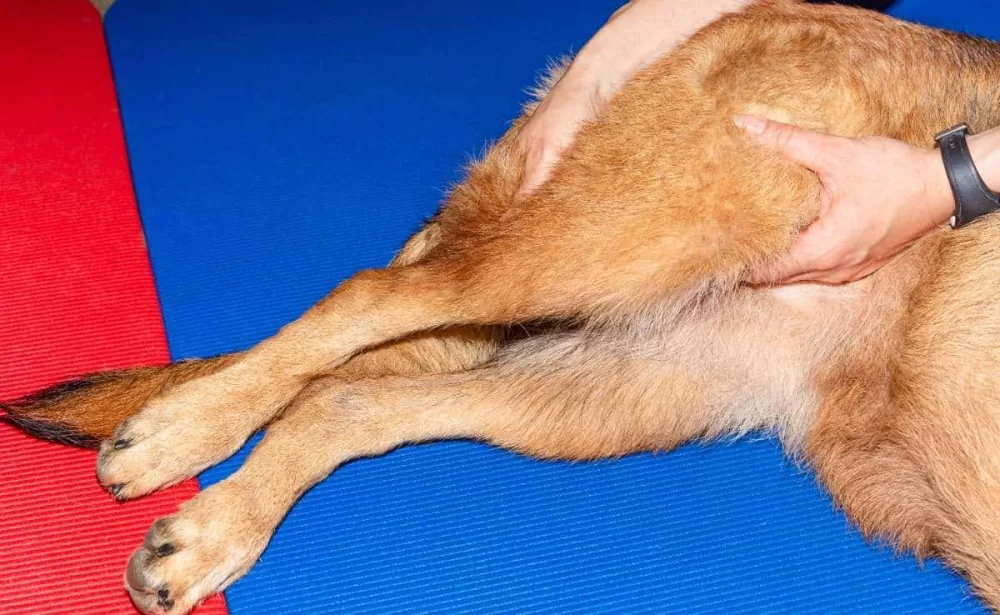- Recognizing Signs of Hip Dysplasia in Older Dogs
- Understanding Hip Dysplasia and Its Impact on Senior Dogs
- Symptoms In-Depth: What to Watch For
- Real Case Example: Spotting Early Warning Signs
- Treatment Options and Management Strategies
- How Hidden Brook Veterinary Can Help Your Dog
Recognizing Signs of Hip Dysplasia in Older Dogs
Hip dysplasia is often associated with young or growing dogs, but the signs of hip dysplasia in older dogs can be subtle and frequently overlooked. As dogs age, joint wear and tear exacerbate the underlying condition, causing increasing discomfort and mobility issues. Recognizing these signs early can make a significant difference in your dog’s quality of life.
Older dogs with hip dysplasia may exhibit difficulty rising after resting, reluctance to jump or climb stairs, and a noticeable limp or altered gait. These signs can gradually develop, making it challenging for owners to immediately identify the root cause as hip dysplasia rather than general aging.
Why Awareness Matters
Understanding the signs of hip dysplasia in senior dogs allows owners to seek veterinary care promptly, preventing further joint damage and improving long-term outcomes. The condition can silently progress for years before obvious symptoms appear, so staying vigilant is crucial.
Understanding Hip Dysplasia and Its Impact on Senior Dogs
Hip dysplasia is a hereditary condition where the hip joint develops abnormally, leading to joint instability, cartilage wear, and arthritis. In older dogs, the cumulative damage can cause chronic pain and severely limit mobility.
Unlike younger dogs, whose symptoms often relate to growth and development, senior dogs face additional challenges such as osteoarthritis and muscle loss, which compound the effects of hip dysplasia.
The Progression Over Time
In senior dogs, hip dysplasia symptoms may not be limited to obvious limping. You might observe subtle behavioral changes like decreased activity, irritability due to pain, or even reluctance to engage in favorite activities like walks or playtime.
These changes can often be mistakenly attributed to old age, but they are important signs pointing toward an underlying joint issue that deserves professional attention.
Symptoms In-Depth: What to Watch For
When looking for signs of hip dysplasia in older dogs, it helps to understand both physical and behavioral symptoms.
Physical Indicators
- Difficulty Standing or Sitting: Your dog might struggle to get up from lying down, often using furniture or walls for support.
- Abnormal Gait: A noticeable limp or “bunny hopping” motion when running or walking.
- Muscle Atrophy: Shrinking of thigh muscles caused by disuse and pain.
- Joint Clicking or Grinding: Audible sounds from the hip joint during movement.
- Decreased Range of Motion: Limited ability to fully extend or flex the hip.
Behavioral Changes
- Reluctance to Exercise: Your dog may avoid stairs, jumping, or long walks.
- Signs of Pain: Whining, licking the affected joint, or increased irritability.
- Changes in Posture: Standing or lying in unusual positions to relieve pressure on hips.
Real Case Example: Spotting Early Warning Signs
Consider Max, a 9-year-old Labrador Retriever, who was brought to Hidden Brook Veterinary after his owner noticed he hesitated before jumping into the car and often favored one hind leg. At first, Max’s owner thought it was simple aging, but over weeks, Max became less enthusiastic about his daily walks and occasionally yelped when getting up.
Upon examination, the veterinarian identified clear signs of hip dysplasia with early arthritis. Thanks to timely intervention, Max started a tailored treatment plan including pain management, controlled exercise, and nutritional support, which significantly improved his mobility and comfort.
This story highlights the importance of early recognition and professional evaluation for signs of hip dysplasia in older dogs.
Treatment Options and Management Strategies
While hip dysplasia is a progressive condition, multiple treatments can improve comfort and mobility for older dogs:
Medical Management
Non-steroidal anti-inflammatory drugs (NSAIDs) and joint supplements such as glucosamine and chondroitin can reduce inflammation and support cartilage health. Your veterinarian may recommend weight management to reduce stress on the hips.
Physical Therapy and Exercise
Controlled, low-impact exercise strengthens muscles around the hips, helping stabilize joints. Hydrotherapy and targeted physical therapy can improve range of motion and reduce pain.
Surgical Options
In some cases, surgical intervention like femoral head ostectomy or total hip replacement might be recommended for senior dogs with severe symptoms, depending on overall health and lifestyle.
How Hidden Brook Veterinary Can Help Your Dog
If you suspect your older dog is showing signs of hip dysplasia, Hidden Brook Veterinary offers comprehensive diagnostic and treatment services tailored to senior dogs. Our team combines advanced imaging, individualized treatment plans, and ongoing support to help your dog regain comfort and mobility.
We also provide guidance on nutrition, supplements, and home care tips to ensure your dog’s joints remain as healthy as possible. By partnering with Hidden Brook Veterinary, you can be confident your dog is receiving the best care designed specifically for their unique needs.
Don’t wait for symptoms to worsen—early detection and intervention are key to helping your older dog live a happier, more active life.












